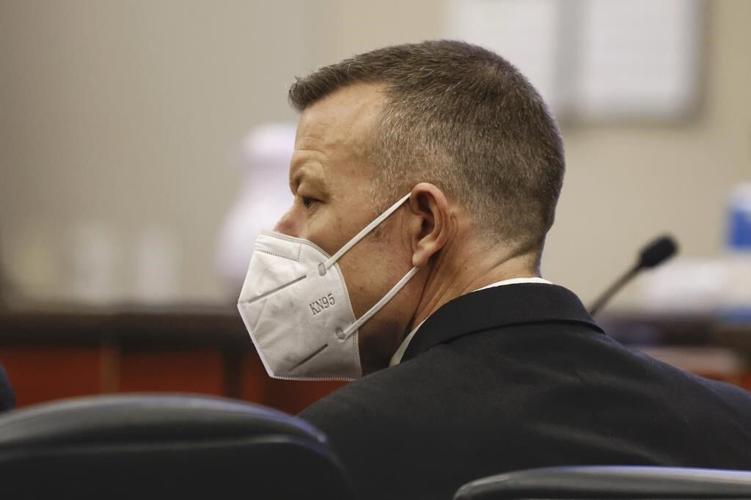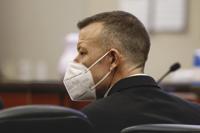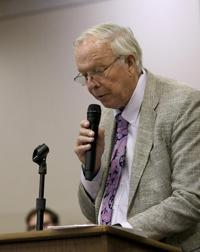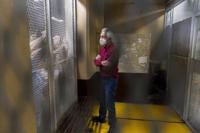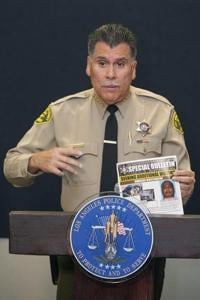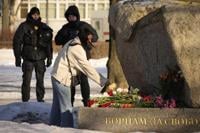MONTEREY, Calif. (AP) — The man convicted of killing Kristin Smart, who vanished from a California college campus more than 25 years ago, was sentenced Friday to 25 years to life in prison.
Monterey County Superior Court Judge Jennifer O’Keefe rejected defense motions to toss out Paul Flores’ first-degree murder conviction, acquit him and order a new trial.
She said Flores had been “a cancer to society” and in addition to his prison term must register as a sex offender for life.
“You deserve to spend every day you have left behind bars,” O’Keefe said, noting that Flores had "lived free in the community” for more than two decades and for his adult life had engaged in “predatory behavior” against women.
Smart, 19, in San Luis Obispo on the state’s scenic central coast over Memorial Day weekend in 1996.
, but she was declared legally dead in 2002.
Prosecutors maintained that Flores, now 46, killed Smart during an attempted rape on May 25, 1996, in his dorm room at the university, where both were first-year students. He was the last person seen with Smart as he walked her home from an off-campus party.
Flores was arrested in 2021 along with his father, who was accused of helping to hide Smart's body.
The trial was held in Salinas, in Monterey County, about 110 miles (177 kilometers) north of San Luis Obispo, after the defense argued that the case's notoriety prevented Flores and his father from receiving a fair trial in their own county.
At the sentencing, prosecutor Chris Peuvrelle asked the judge for the maximum sentence, called Flores a “true psychopath” and said he should never be released from prison.
Smart's father, siblings and other friends and relatives spoke at the hearing about the impact of her death on the family. Her brother, Matthew Smart, asked that Flores spend life in prison.
“Paul chose to take a life, my sister Kristin’s life, a beautiful life,” he said. "And now he must pay.”
San Luis Obispo County District Attorney Dan Dow said in a statement after the hearing that justice had been finally served.
“After nearly 27 years of unspeakable anguish, the Smart family has finally seen their daughter’s killer sentenced," the statement said. "Their strength and determination serve as an inspiration to us all.”
A jury found Flores guilty in October. A separate jury acquitted Ruben Flores, 81, of being an accessory.
At Paul Flores' trial, defense attorney Robert Sanger tried to pin the killing on someone else. Sanger noted that , who was later convicted at a sensational trial of murdering his pregnant wife and the fetus she was carrying, was also a student at the campus about 200 miles (320 kilometers) up the coast from Los Angeles.
Sanger filed motions on Feb. 24 in Monterey County Superior Court requesting that charges be dismissed and his client acquitted. One motion also seeks a new trial.
Sanger disputed forensic evidence offered by the prosecution. He contended that Flores' right to a fair trial was violated because of prosecution errors and “the admission of junk science as evidence.”
“There is a reason that a case against Paul Flores was not brought for 25 years,” the motion said. “There was no evidence of a murder or that Paul Flores committed it.”
The San Luis Obispo County District Attorney's Office asked the court to deny those requests, arguing “claims of misconduct are baseless and the claims of judicial error are incorrect.”
Flores had long been considered a suspect in the killing. He had a black eye when investigators interviewed him. He told them he got it playing basketball with friends, who denied his account. He later changed his story to say he bumped his head while working on his car, according to court records.
Investigators conducted dozens of fruitless searches for Smart’s body over two decades. In the past two years they turned their attention to Ruben Flores’ home in the community of Arroyo Grande, about 12 miles (20 kilometers) south of California Polytechnic State.
Behind latticework beneath the deck of his large house on a dead end street, archaeologists working for police in March 2021 found a soil disturbance about the size of a casket and the presence of human blood, prosecutors said. The blood was too degraded to extract a DNA sample.

